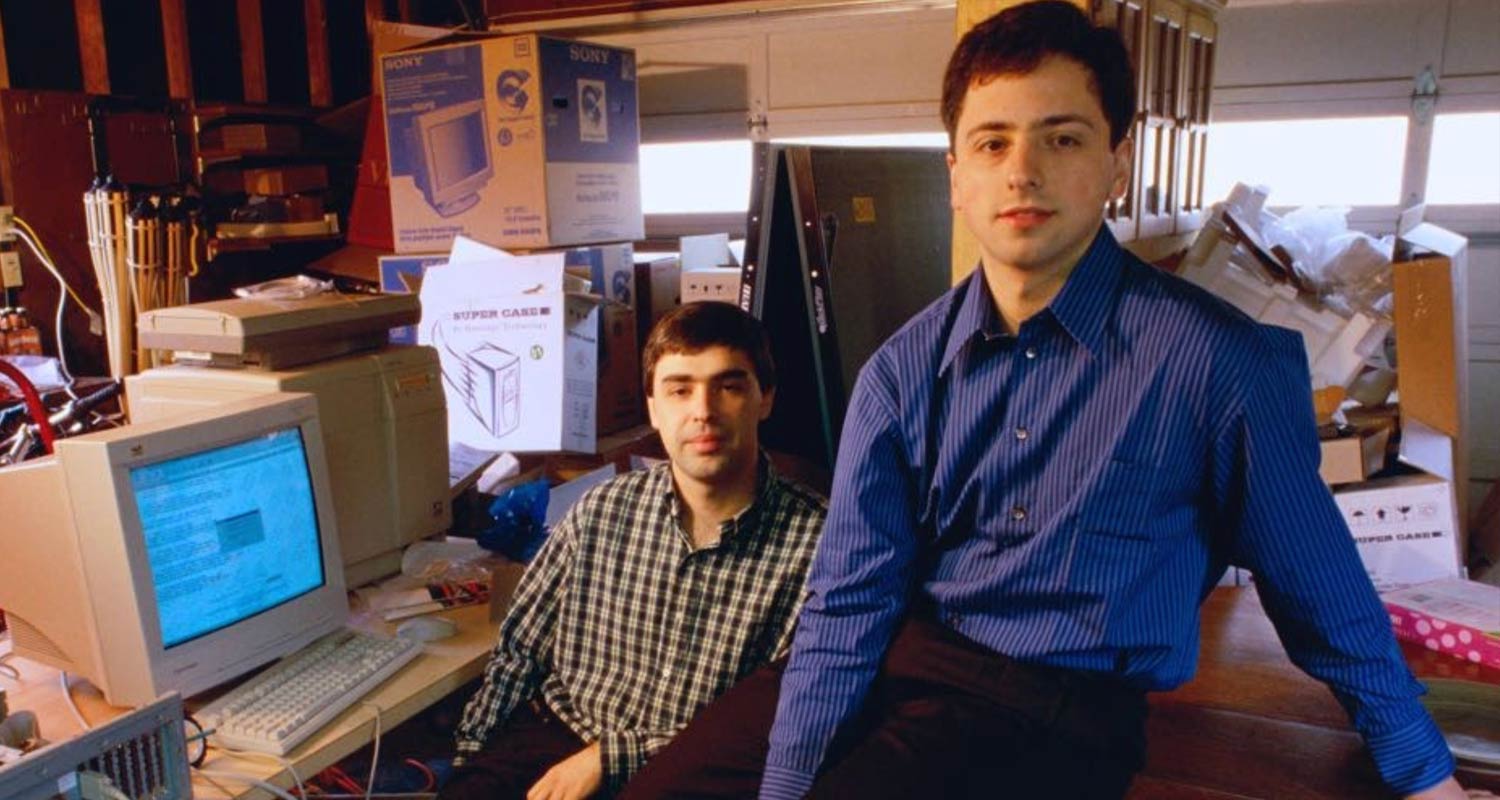
TechCentral presents 40 less-known facts about the history and development of the global technology industry.
- The first computer virus: The first computer worm, Creeper, was created in 1971 as an experiment. It displayed the message “I’m the creeper, catch me if you can!” and didn’t harm any data.
- Apple’s original logo: Apple’s first logo featured Sir Isaac Newton sitting under a tree, with an apple about to fall on his head, a far cry from the sleek bitten apple logo we know today.
- The internet predates the web: The internet was developed in the late 1960s with the creation of Arpanet, but the world wide web, which made the internet accessible to everyone, wasn’t invented until 1989.
- The first 1GB hard drive: IBM introduced the first 1GB hard drive in 1980. It weighed more than 225kg and cost US$40 000.
- The first webcam: The first webcam was invented at the University of Cambridge in 1991 to monitor a coffee pot, so researchers wouldn’t waste a trip to an empty pot.
- The origin of the @ symbol: The @ symbol, used in e-mail addresses, was chosen by Ray Tomlinson because it wasn’t commonly used in names and wouldn’t be confused with anything else.
- Google’s first office: Google’s first office was a rented garage belonging to the late Google executive and YouTube CEO Susan Wojcicki in Menlo Park, California. Today, it’s a multibillion-dollar global company.
- Twitter’s original name: Twitter was originally called “twttr”, inspired by the photo-sharing site Flickr. The founders added vowels later to make it more user-friendly.
- The first domain name: The first domain name ever registered was symbolics.com, on 15 March 1985, by a computer manufacturer called Symbolics.
- Microsoft’s first product: Microsoft’s first product was a version of the Basic programming language for the Altair 8800 computer, not an operating system.
- First smartphone: The first smartphone, IBM’s Simon Personal Communicator, was released in 1994 and included a touchscreen, e-mail capability and a handful of built-in apps.
- Wi-Fi’s origin: Wi-Fi technology was derived from a failed project to detect exploding black holes in the universe, led by an Australian scientist John O’Sullivan.
- The first computer mouse: The first computer mouse, invented by Douglas Engelbart in 1964, was made of wood and had only one button.
- The bug in “debugging”: The term “debugging” originated in 1947 when Grace Hopper found a moth causing issues in a computer. She taped it into the logbook, calling it the “first actual case of bug being found”.
- Napster’s impact: The peer-to-peer file-sharing service Napster, launched in 1999, revolutionised the music industry by enabling widespread sharing of (illegal) MP3s, leading to legal battles and the rise of digital music.
- Adobe’s free fonts: Adobe released its first set of free fonts for the internet in 1989. The move was instrumental in standardising digital typefaces.
- The first social network: The first social networking site, Six Degrees, launched in 1997. It allowed users to create profiles and list friends, laying the groundwork for future social media platforms.
- Linux’s origin: Linux was created by Linus Torvalds in 1991 as a hobby. Today, it’s one of the most widely used operating systems in servers, supercomputers and mobile devices (via Android).
- The first webcam livestream: The first live webcam was set up in 1993 to monitor a coffee pot at the University of Cambridge, so scientists could avoid walking to an empty pot.
- The first computer programmer: Ada Lovelace, born in 1815, is considered the first computer programmer. She wrote an algorithm for Charles Babbage’s early mechanical general-purpose computer, the Analytical Engine.
- Oldest known computer: The oldest known analogue computer is the Antikythera mechanism, an ancient Greek device used to predict astronomical positions and eclipses, dating back to around 100 BC.
- YouTube’s original purpose: YouTube was originally conceived as a dating site called “Tune In, Hook Up” before becoming a platform for sharing videos of all kinds.
- Captcha origins: Captcha, the test to tell humans and computers apart, was developed to digitise books. The words you decipher in Captcha were from scanned texts needing human interpretation.
- First emoticon: The first emoticon was proposed by computer scientist Scott Fahlman in 1982 to distinguish jokes from serious comments in online discussions.
- The internet of things (IoT): The first IoT device was a modified Coke machine at Carnegie Mellon University in the early 1980s, which allowed programmers to check if a cold drink was available.
- Meme’s origin: The term “meme” was coined by Richard Dawkins in his 1976 book The Selfish Gene to describe an idea that spreads from person to person. It has since been adopted for internet culture.
- First computer with a hard disk drive: IBM’s Ramac 305, introduced in 1956, was the first computer with a hard disk drive. The drive was as large as two refrigerators and held just 5MB of data.
- Google’s first doodle: The first Google doodle was a stick figure placed behind the second “o” in “Google” to show that the founders were at the Burning Man Festival in 1998.
- Steve Jobs’s Atari connection: Before founding Apple, Steve Jobs worked at Atari, where he designed the game Breakout. He enlisted Steve Wozniak to help him, offering a bonus for creating a simplified version.
- The first 1MB memory chip: Intel introduced the first 1MB DRAM chip in 1984, marking a significant milestone in memory capacity, which has since been surpassed by millions of times.
- Bluetooth’s Viking origin: Bluetooth technology is named after a 10th-century Scandinavian king, Harald Bluetooth Gormsson, who united Denmark and Norway – similar to how Bluetooth unites different devices.
- The first online sale: The first secure online transaction was a CD sale by the band Ten Summoner’s Tales through the website NetMarket on 11 August 1994, marking the birth of e-commerce.
- The first computer game: The first computer game, Spacewar!, was developed by MIT students in 1962. It was a space combat game that ran on a PDP-1 computer.
- The first smartphone app store: The first mobile app store was the Nokia App Store, launched in 1999, offering downloadable apps for its smartphones long before Apple’s App Store and Google Play.
- The origins of USB: USB, or Universal Serial Bus, was created to simplify connecting devices to computers. Before USB, computers had multiple types of ports, making it difficult to connect peripherals.
- The first e-mail spam: The first instance of e-mail spam occurred in 1978 when a marketing manager sent an unsolicited e-mail to 393 Arpanet users promoting a new computer system.
- GPS wasn’t always free: The Global Positioning System (GPS) was originally developed by the US department of defence for military purposes and was only made available to civilians for free in the 1980s.
- First search engine: The first search engine, Archie, was created in 1990 by a student at McGill University in Canada. It indexed FTP files, serving as a precursor to modern search engines.
- The size of the first website: The first website, created by Tim Berners-Lee in 1991, was just a simple text page with links to other pages and documents, showcasing the potential of the world wide web.
- Nokia’s origin: Before becoming a mobile phone giant, Nokia started in 1865 as a paper mill in Finland. It later ventured into various other industries, including rubber boots and electronics, before focusing on telecommunications.




